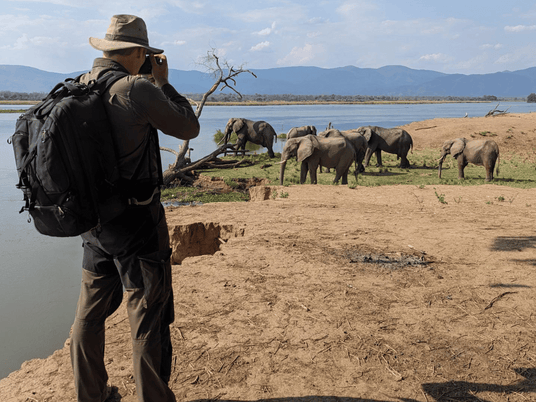The brown-throated sloth is only found in Central and South America, and it's an animal I’m excited to study. So, I travel to Panama as a guest of Tranquilo Bay to see what I can learn.
Sloths
In Spanish, sloth is “perezoso,” which means “lazy”. But their slow way of life is perfect for this unique creature, that survives on little food, fosters a unique relationship with an insect, and hangs effortlessly from even the tallest trees. Tranquilo Bay is on Panama’s Caribbean coast. This secluded island is home to a whole host of wildlife and owner, Jim, is here to show me around. You can follow in my footsteps and see my itinerary here: https://www.robertefuller.com/travel/
Sloths are amazing climbers
Sloths are slow, but it’s amazing how fast they can climb a tree compared to humans. Despite having less muscle mass than similar mammals, their grip strength is double that of humans and I watch it hang upside down from branches high in the canopy by one arm while scratching and holding on to its young baby.
The sloth's leafy diet
Sloths are folivores, feeding on a low energy diet of tough, rubbery leaves. They only eat a couple of handfuls a day, but this can take up to two weeks to digest in a multi-chambered stomach. They compensate for this poor diet with a slow-paced lifestyle, expending as little energy as possible. These creatures have been around for about 65 million years, so it’s clearly lifestyle that works.
Sloth and baby
Brown-throated sloths’ mate between January and March, and after a six-month gestation, females give birth to a single offspring. It’ll be cared for until it reaches independence at about six-months old. So, the young one I’m watching still has a bit of learning to do before then. But at a month-old baby sloths can already hang with ease, using their long, curved claws. For efficient climbing, females need to keep their weight low, so they don’t store milk, instead producing it in small drops throughout the day, which the baby suckles milk from its mother. Mother and baby share a close bond and I see it crawling around to her face touching noses and licking each other. The baby is also licking at any bits of leaf around its mother’s mouth. By tasting the food mum has eaten, it learns which trees to eat from.
A special sloth relationship with moths
I notice that some sloths have a green tinge. It’s algae in their fur. It helps them stay camouflaged in the trees. But this isn’t the only benefit. Algae is rich in fats and nutrients, which are sorely lacking from their leafy diet. So, for the energy conscious sloth, the algae acts as a mobile larder. And to promote algal growth, the sloth has developed a surprising relationship with an insect. Their fur is home to a unique species, the sloth moth, and some sloths carry more than a hundred in their fur! The more moths they have the more algae and nutrients they carry. And in return, the sloth helps the moth, making the dangerous journey down to the rainforest floor to defecate so the female moths can lay their eggs in their fresh dung. This incredible symbiosis is key to the sloths’ unique lifestyle.
Join Robert's travel club Interested in wildlife travel?
If you long to see elephants roaming wild or dream of watching polar bears on the ice, then you may be interested in joining my travel club. I travel to far-flung destinations to see wildlife and now I want to share my knowledge with you. I've teamed up with award-winning wildlife tour operators Wildfoot Travel to create a travel club with a number of benefits. And, it's free! Interested? Find out More









